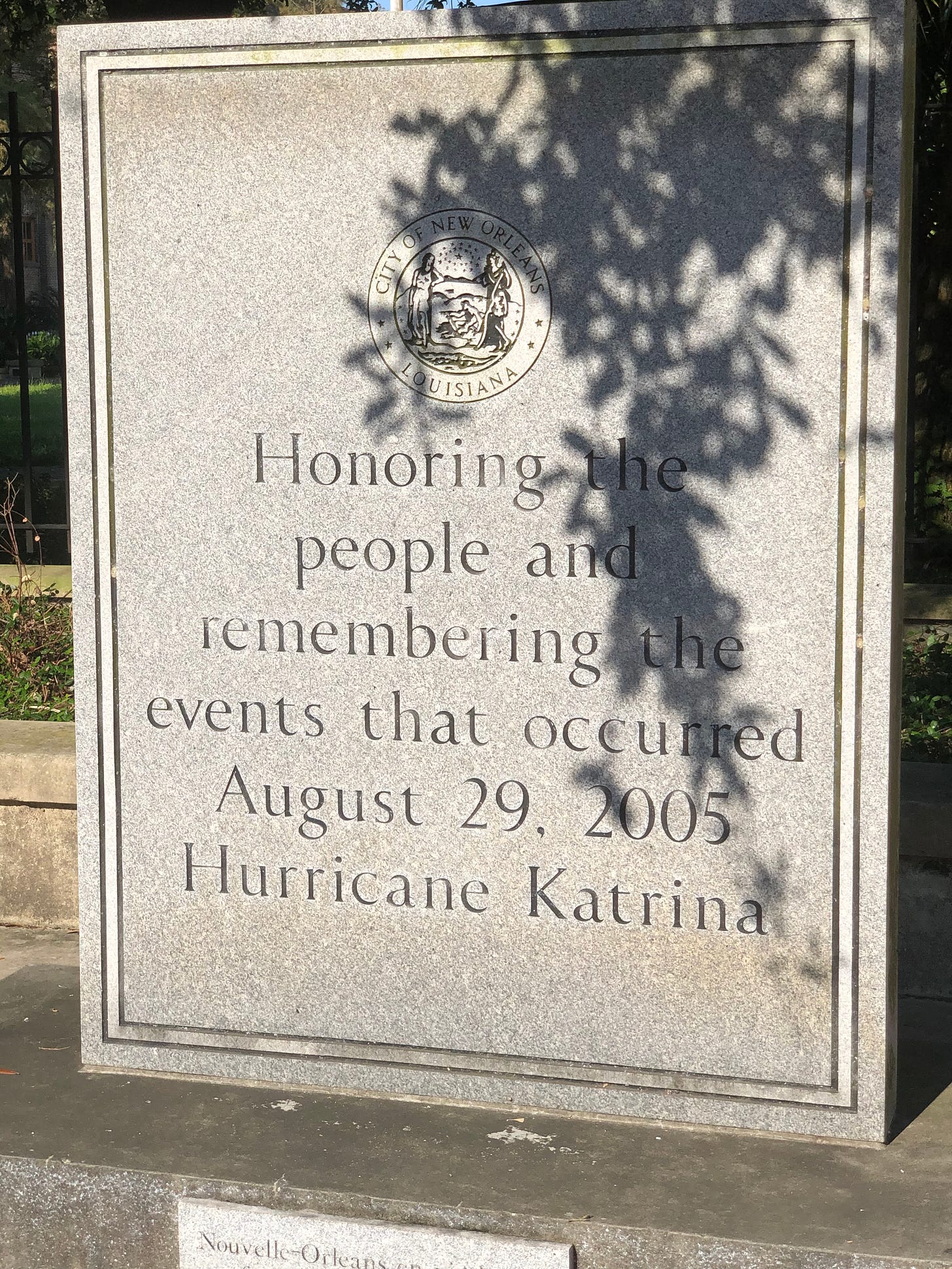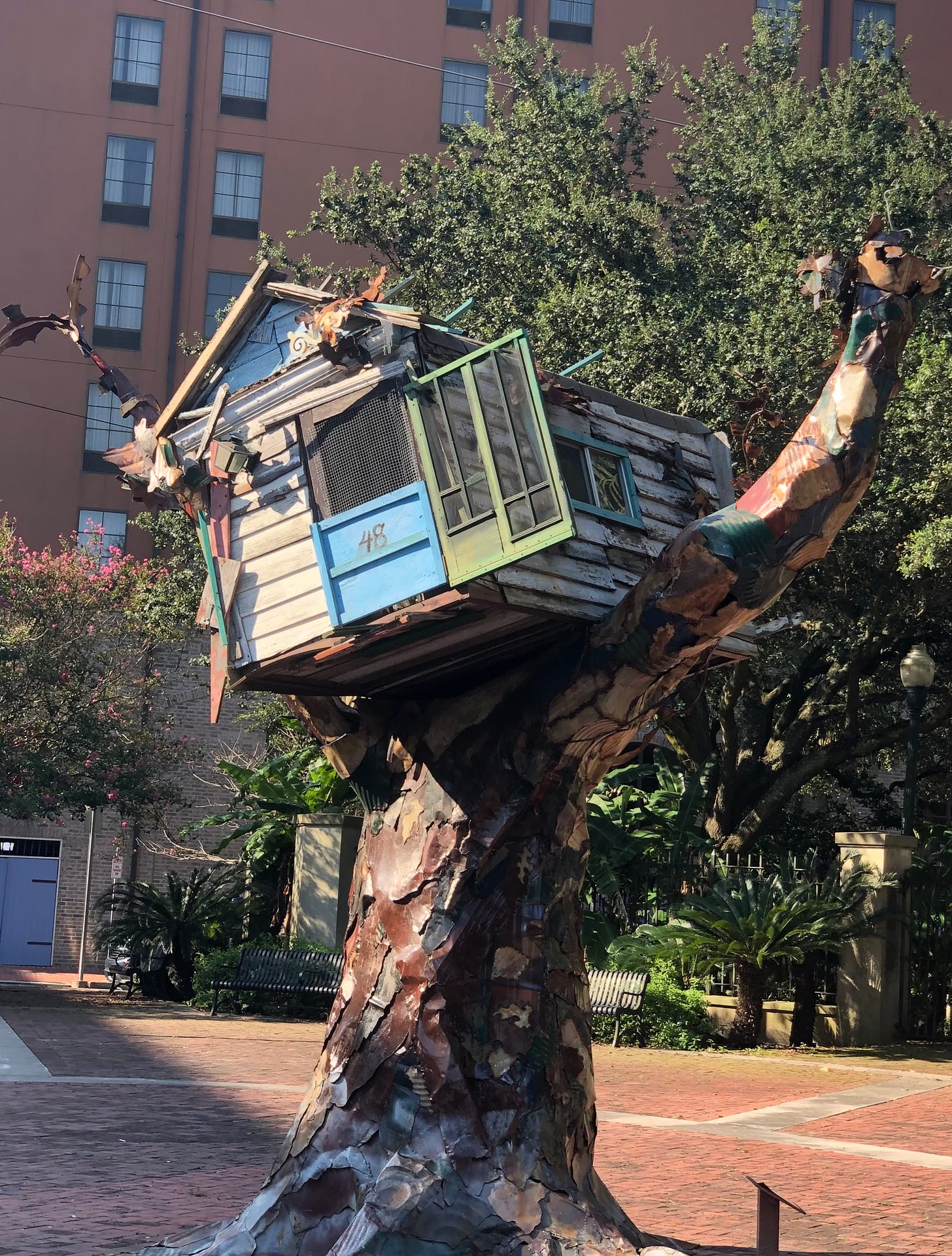This week my city, New Orleans, is everywhere in the news. Even here in Australia people are remembering Katrina, a defining moment for the city, twenty years after the storm. The second part of my two-part essay (see part one here) about leaving the city that fateful weekend is below. Right now so many of my friends back in New Orleans can’t even watch the news or read stories and memories revisiting that traumatic time. Katrina was devastating for so many and its impact can hardly be measured through statistics and first-person accounts. Just know that my heart is with the people of New Orleans this week.
Saturday, August 27, 2005 (continued)
Greg and I were in denial that late afternoon. I had been through so many big storms at my home in Pensacola – Dennis earlier that summer and Ivan the summer before – that I didn’t panic easily. Greg, an Australian native, was his laid-back self as usual. After our quiet lunch at the normally noisy Domilise’s, we headed back to Greg’s house for a long nap. The street was quiet by now in the still heat of mid-afternoon and we took that kind of deep afternoon rest that comes only from a long boozy lunch. We had still made no plans for our departure.
The sun was getting lower in the sky when we wandered back downstairs to check the TV news update on the storm. We slowly woke up as we realized that while the mayor was still dithering about mandatory evacuation, the state was planning for contraflow turning all the lanes of the interstate out of town into traffic going one way – north, away from New Orleans. The worse case scenario bandied about for years was becoming more of a reality than ever before. We decided we would have to abandon Greg’s home and the city later that evening when the contraflow started. Meanwhile, we occupied ourselves by carrying some of his finer pieces of antique furniture up stairs just in case of flooding. It seemed like a distant possibility, but the action kept us distracted from staring slack-jawed at the television screen and witnessing the rising panic of the newscasters and meteorologists. Greg packed lightly, thinking he would only be gone a few days.
We drove north on Interstate 55 with the contraflow to Meridian, Mississippi, my hometown where my father still lived. My daughters were already in Mississippi with their father and would meet us in Meridian the next morning. After we made all those arrangements, we decided it was time to hit the highway. I followed Greg in my car and we headed out of the city. The traffic was slow moving through New Orleans East. Little did I know that I was seeing these familiar buildings for the last time in a quite a while.
The sun was setting behind us as we drove toward Lake Pontchartrain casting rays of brilliant orange and yellow on the city I loved. After we crossed that huge deep blue body of water at Slidell, we turned north toward Mississippi.
During that long drive, we both had our radios tuned to 870 on our AM dial. WWL-AM reached far north into Mississippi and announcer Garland Robinette, a friend of Greg’s, was giving continuous coverage of the impending storm and taking live call-ins from listeners. We were astounded that New Orleans Mayor Ray Nagin had not yet ordered a mandatory evacuation of the city. Greg and I kept calling each other on our cell phones during the drive expressing outrage as we learned that the storm definitely seemed to be dancing its way through the Gulf directly to New Orleans.
My feelings at the time were mostly anger and frustration over the incompetence of the city leaders. We both truly thought we were just leaving the city for just a few days. Katrina was more of an inconvenience than anything. We had no idea this storm would impact our lives like a wrecking ball crashing into a tall building, the debris falling hard onto the ground.




